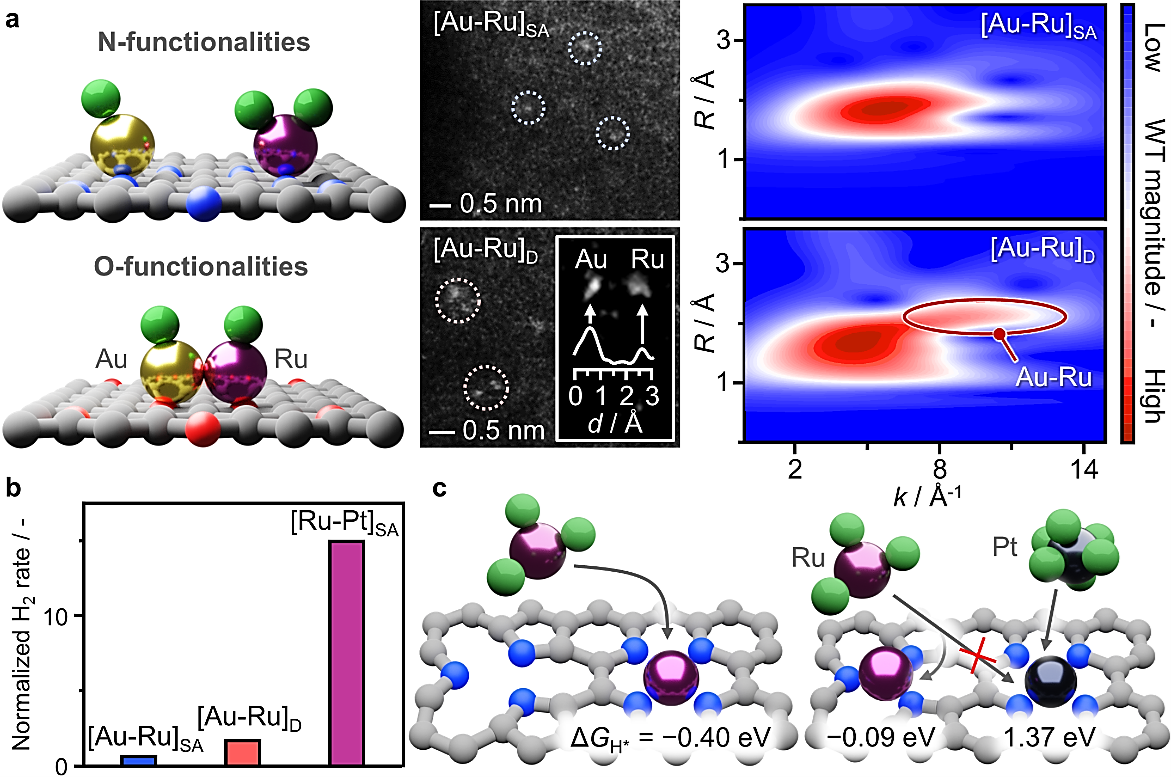Atomically precise design of bimetallic Au-Ru and Ru‑Pt low‑nuclearity catalysts via carbon host functionalization
Bimetallic low‑nuclearity catalysts (b‑LNCs) have recently gained prominence by virtue of the unique cooperative interactions they often exhibit. However, the lack of synthetic strategies with control over intermetallic bond formation and the intrinsic limitations of characterization techniques pose major hurdles to their development.[1] Furthermore, the study of catalytic synergies is still in its infancy, so far exclusively focusing on direct cooperativity mechanisms. Herein, we conduct the first comparative investigation between bimetallic dimers and isolated atoms. To this end, a holistic approach is developed combining (i) precision synthesis, (ii) advanced characterization, (iii) exploration of single‑site proton adsorption properties via the hydrogen evolution reaction (HER), and (iv) density functional theory. Aiming to explore the impact of virtually inactive metal atoms for the HER (e.g., Au) on moderately active ones (e.g., Ru), Au‑Ru LNCs are studied. Control over metal‑bond formation is achieved by careful formulation of the carbon host, delivering Au‑Ru dimers on O‑functionalities and isolated atoms on N‑functionalities (Fig. 1a).[2] Intriguingly, Au atoms enhance the HER kinetics of their Ru analogs already when isolated, magnifying the effect twofold in dimers. While the cooperativity action in the dimers is attributable to direct intermetallic charge redistribution, the nature of the synergy in the isolated architecture is unknown. Notably, by substituting Au atoms with Pt ones, exhibiting higher affinity for N‑cavities and similar activity to Ru atoms, the synergy is amplified tenfold (Fig. 1b). Structural alterations induced by the integration of a second metal species are analyzed. Pt atoms are found to occupy the most energetically‑favorable N‑cavities, leading Ru atoms to adopt a distinct and more active configuration (Fig. 1c). These findings provide novel insights into complex metal‑metal and metal‑host interplays in b‑LNCs.

Fig. 1a Distinct architectures of Au‑Ru LNCs and corresponding microscopy and spectroscopy analyses. b HER activity of b‑LNCs normalized to Ru single atoms. c Cavity control exerted by Pt atoms, displacing Ru atoms to more active configurations, as reflected by their proton adsorption energy (ΔGH*).
[2] V. Giulimondi, S.K. Kaiser, A.J. Martín, S. Büchele, F. Krumeich, A.H. Clark, J. Pérez-Ramírez, Small, 2022, 18, 2200224.